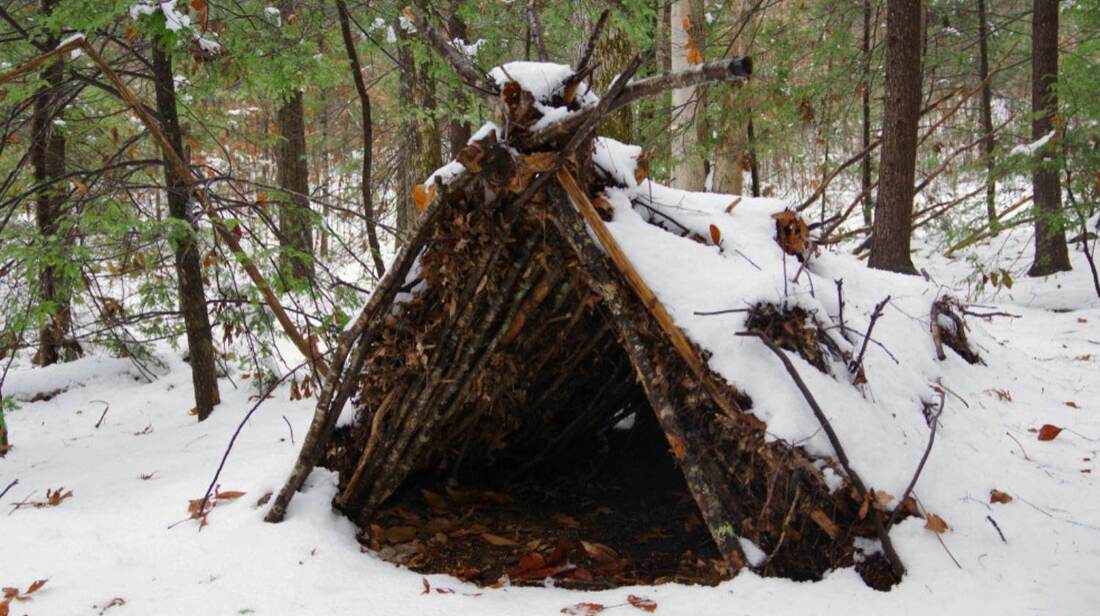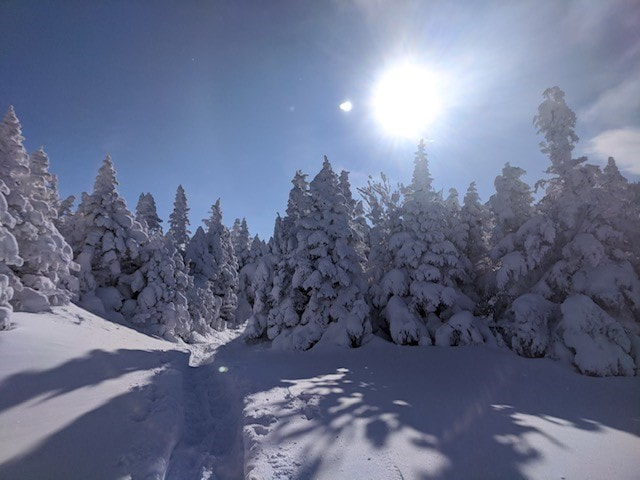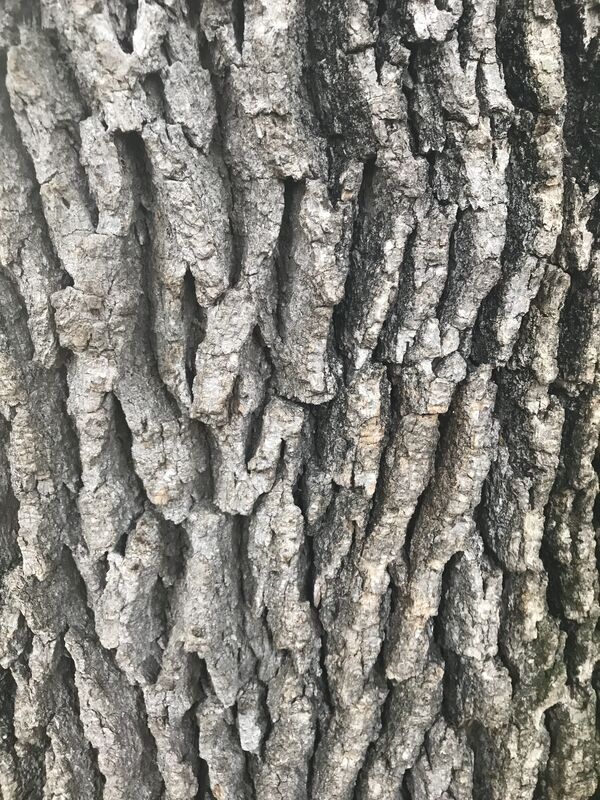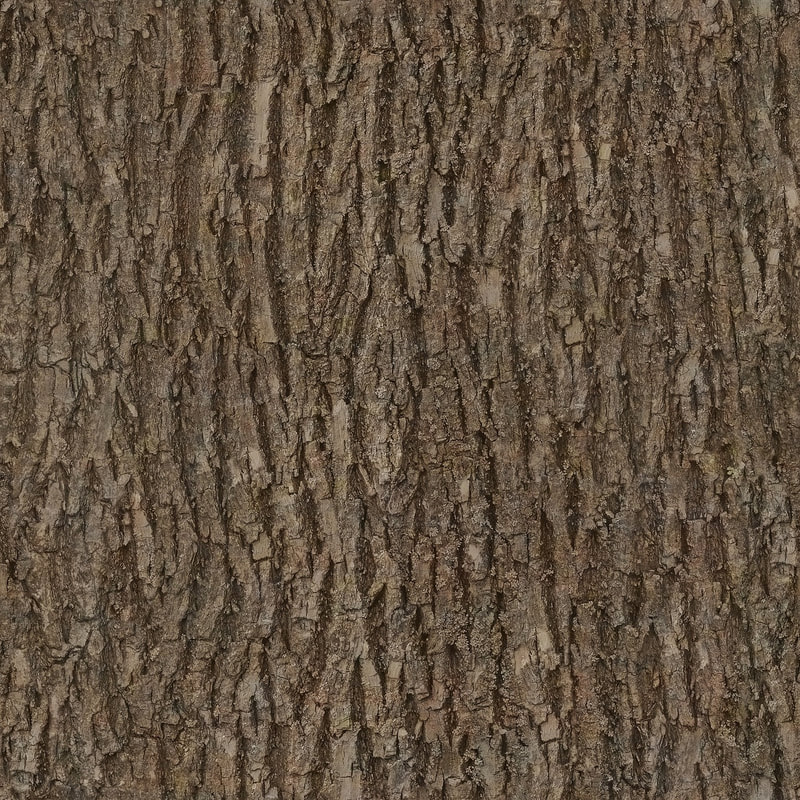|
Denuded of their leaves, the verdant raiments of Spring and Summer rendered brilliantly hued in Autumn, trees in Winter allow us to hone in on the subtle and not so subtle differences of their outermost layer, overlaying the wood and vascular cambium -- their bark. As you make your way about in Winter, take note of tree bark - its color, texture, and form. What colors do you see? Greenish gray? Silver or brown? Red undertones? Is it smooth--as is typically the case with young trees, much like smooth skin of young people--or deeply grooved and weathered, showing its years? Do its grooves appear as elongated parallel ridges or striations? Diamonds? Braided twists? Is the bark rigid? Flaky? Layered? Deep or relatively flat? How does it feel to the touch? Hard or soft? Every species of trees has its signature bark, and people knowledgeable about trees can identify them by their bark alone. Take advantage of the starker Winter landscape to appreciate the varied beauty of tree bark. I prefer winter and fall, when you feel the bone structure of the landscape. Something waits beneath it; the whole story doesn't show. -- Andrew Wyeth
0 Comments
 Martin Luther King Day offers a time to reflect on the impact of the great civil rights leader and his legacy of respect. A corollary to respecting other human beings, regardless of race, ethnicity, or skin color is respect for nature -- respect for other leaving creatures and the ecosystems that support them. Respect for nature, like Civil Rights, is rooted in the notion of "inherent worth." In the context of environmental ethics, Paul W. Taylor, in his groundbreaking book Respect for Nature: A Theory of Environmental Ethics, describes "inherent worth" in this way: Our duties toward the Earth's non-human forms of life are grounded on their status as entities possessing inherent worth. They have a kind of value that belongs to them by their very nature, and it is this value that makes it wrong to treat them as if they existed as mere means to human ends. It is for their sake that their good should be promoted or protected. Just as humans should be treated with respect, so should they. (p. 13) There are a range of ways to regard nature, many of which ultimately are about what nature can do for people. Nature can be regarded as a resource to be exploited (e.g., "natural resources"), focused on energy, agriculture, timber, and extraction-oriented activities. It can be experienced as a playground for outdoor activities. Perhaps more nobly, nature can be considered a refuge, an escape from hectic modern life. It can be engaged with aesthetic appreciation and with scientific curiosity. Yet, all of these, notes Taylor, differ from the attitude of respect for nature grounded in a moral sense of nature's inherent worth. A sense of nature's inherent worth is central to a biocentric outlook on nature and the attitude of respect for nature. From the perspective of a biocentric outlook, writes Taylor, [O]ne sees one's membership in the Earth's Community of Life as providing a common bond with all the different species of animals and plants that have evolved over the ages. One becomes aware that, like all other living things on our planet, one's very existence depends on the fundamental soundness and integrity of the biological system of nature. When one looks at this domain of life in its totality, one sees it to be a complex and unified web of interdependent parts." (p. 44) Environmental ethics is not an obvious legacy of Martin Luther King, Jr.'s Civil Rights work. Yet, there are interrelated threads, rooted in the notion of inherent worth and an awareness of the inter-dependencies of living creatures. As King himself said, It really boils down to this: that all life is interrelated. We are all caught in an inescapable network of mutuality, tied into a single garment of destiny. Whatever affects one destiny, affects all indirectly. On MLK Day, we can reflect on the wisdom and courage of the great Civil Rights leader, and the broad impact and application of his vision.  (c) Riley E. Carlson (c) Riley E. Carlson Time outside in Winter offers its rewards--pristine settings, a feeling of adventure, and the beauty of nature's muted palette. But let's face it. Winter tends to be a time of huddling indoors and enjoying warmth and shelter. In this way, we are no different than our fellow animals, and as with the shelters of other animals, our shelters make use of available natural features and materials. Consider caves and simple built structures, such as earthen pits covered with thatched roofs and tents. Writes Roma Agrawal in her delightfully informative and readable book Built: The Hidden Stories Behind our Structures, For a long time ... humans simply built from the materials that Nature provided, without changing their fundamental properties. Our ancient ancestors' dwellings were made from whatever they could find in their immediate surroundings: materials that were readily available and could be easily assembled into different shapes. With a few simple tools, trees could be felled and logs joined to create walls, and animal skins could be tied together and suspended to form tents. Nowadays, amid canyons of concrete, steel, and glass skyscrapers, it may feel like a stretch to imagine these simple structures occupying the land that is now New York City. But these were the structures used by the indigenous Lenape people and by European settlers, and many of the engineering principles of these structures find expressions in the giant skyscrapers that give Manhattan its signature skyline.  It's a new year and a new decade, a time for new beginnings and, with a nod to the number of the year we've entered, perhaps clearer vision of what we hope the coming time will bring. While we often think of Spring, with its plant life bursting forth, as a time of awakenings, Winter's shorter daylight hours and colder temperatures offers a time to retrench, restore, and rejuvenate, to collect one's energies and dive deeply into one's inner creativity. Indeed, writes the Italian poet Pietro Aretino, "Let us love winter, for it is the spring of genius." One also is reminded of T.S. Eliot's lines from The Wasteland: Winter kept us warm, covering Earth in forgetful snow, feeding A little life with dried tubers. While nature, with its withered stalks, may appear dormant in winter, there is a drawing inward that supports life and growth. Writes Gary Zukov, The winter solstice has always been special to me as a barren darkness that gives birth to a verdant future beyond imagination, a time of pain and withdrawal that produces something joyfully inconceivable, like a monarch butterfly masterfully extracting itself from the confines of its cocoon, bursting forth into unexpected glory. Allow yourself time during these wintry days to draw within, nurture, and replenish. |
About this Blog
Hi! I'm Nancy Kopans, founder of Urban Edge Forest Therapy. Join me on an adventure to discover creative ways to connect with nature in your daily life, ways that are inspired by urban surroundings that can reveal unexpected beauty, with the potential to ignite a sense of wonder. Archives
April 2023
Categories
All
|




 RSS Feed
RSS Feed